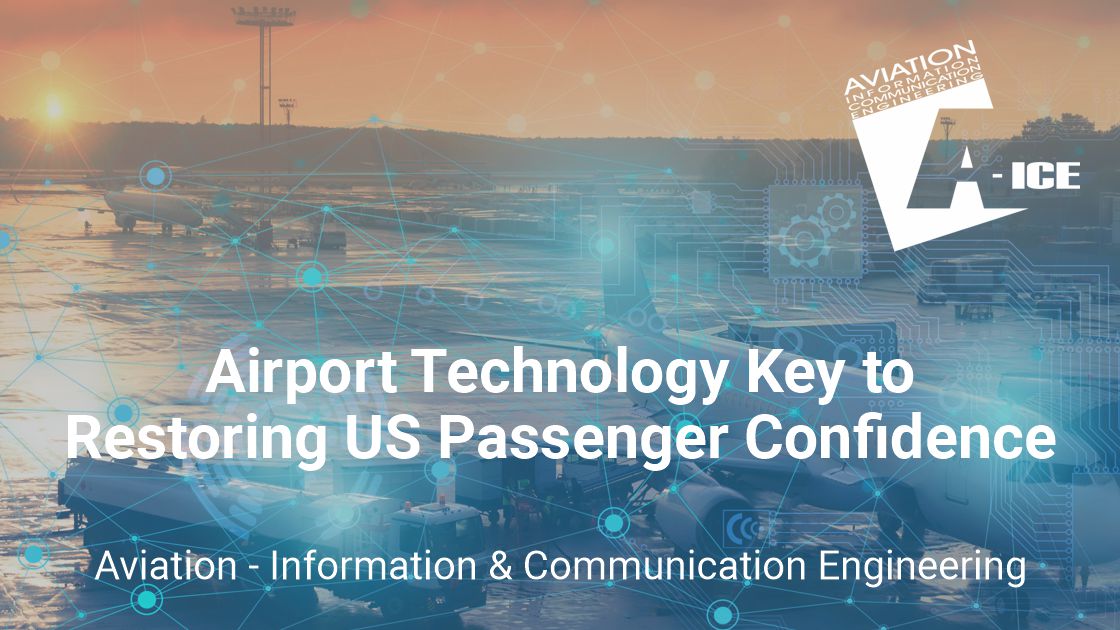Airport Technology Key to Restoring US Passenger Confidence
| Company | A-ICE |
|---|---|
| Date | 12.10.2022 |

Passenger confidence and a good travel experience have always been high priorities for airports across the US. According to industry research, both have taken a hit during recent years. Now is the time to look to airport technology to restore all-important passenger confidence.
Taking a completely new approach
Many airport operators are using this stage of the aviation recovery period to consider the future. With valuable lessons learned in the past few years, they’re thinking outside the box in terms of the economic model, data and energy usage.
Taking a new approach requires investment in infrastructure. With the US government beginning a rollout of grants earlier this year to support the modernization of infrastructure, this is a step in the right direction. Smaller airports across the US have historically been ‘firefighting’ with their budgets, according to recent news. Now many will have the opportunity to explore technologies and enjoy some of the benefits.
In terms of cost, fixed operating costs have long been an issue in the traditional economic model. With futureproofing in mind, it is now time to look at other options, such as the end of long contracts and cumbersome in-house infrastructure.
How to choose the right airport technology
Choosing the right technology can be challenging and complex. However, it is important to understand what you have already and how friendly it is to integration.
Getting the priorities right is a significant part of the planning process, but there are key areas where the right tech and solutions can really make a difference – to both operations and passenger experience.
The importance of real-time, smart data
The importance of data cannot be underestimated within the airport environment. The faster the data is processed and available, the more valuable it is to the management system.
When you can give access to smart real-time data to the right teams, it can become an extremely powerful tool.
For example – this type of data can be used to predict delays and enable better handling of resources to proactively address a potential issue.
Integrated with smart FIDS solutions then gives you the opportunity to strengthen passenger confidence by keeping them reliably informed and minimising the potential delay.
Another example of the power of data-sharing can be found in one of the most common complaints passengers have – baggage handling.
Optimizing baggage handling and reconciliation can make a big difference to passenger experience. Lost luggage can result in a loss of confidence very quickly and this is an issue for many airports around the world.
The introduction of new regulations in 2018 means that now, passengers and bags must be reconciled before boarding and fully tracked throughout the journey. This includes interlining, which requires access to vital baggage data in good time.
Some of the latest, most innovative airport technologies can now automate compliance and give wings to ground handling teams like never before. Baggage reconciliation solutions integrated with smart DCS in real-time offer seamless, secure access to the data they need – when they need it.
Working towards a seamless passenger experience
With these examples just a snapshot of what airport technology can do now, a completely seamless passenger experience can’t be that far away. While delays are inevitable in the aviation industry, keeping them to a minimum and passengers informed with the latest data can go a long way to restoring confidence.
The aviation industry is taxiing down the runway towards a smarter, more efficient future and the key lies in technology.
Contact
00071, Pomezia (Rome) ITALY
-
Branches
Milan: Viale Enrico Forlanini 23, 20134
Milano, ITALY
-
USA: 1140 3rd Street, N.E., Washington
District of Columbia, 20002, USA
-
London: 17 Carlisle Street, 1st Floor, London
England, W1D 3BU, UNITED KINGDOM
-
- Rome (HQ): +39 0690214421

